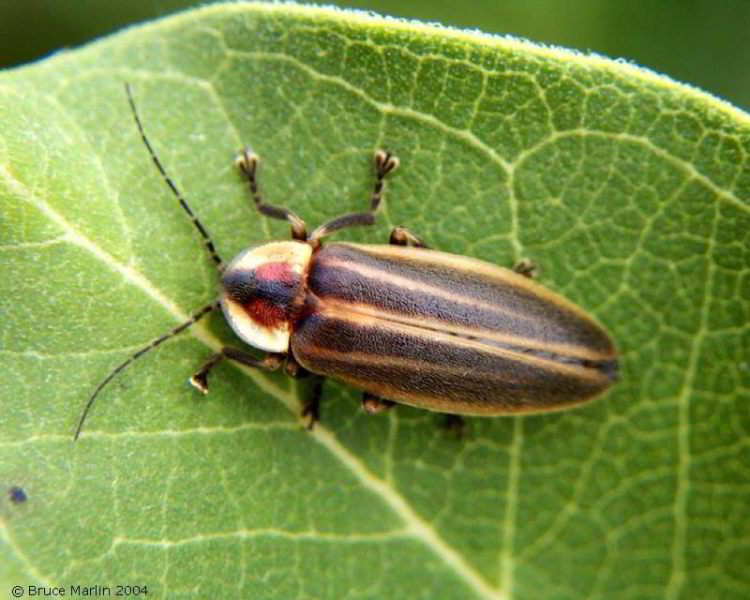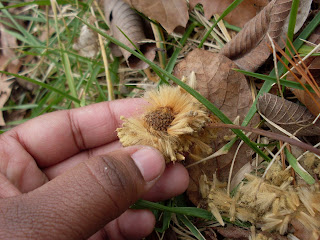Title: Super Crocs & Monster Wings: Modern Animals’ Ancient Past
Author: Claire Eamer
Publisher: Annick Press
I have read many books about ecology and animal behavior, but this is the first book I have come across that explains the behavior of animals of the past and present. It is children’s book about evolution, paleobiology and systematics. Paleobiology is a discipline related to paleontology but include a comparison of extinct, prehistoric organism to current, living organisms. When scientists come across a fossil, they begin a long, creative process of puzzle-solving, much like the scientists from Waking the Baby Mammoth. They usually compare the animal –its body, its behavior, and its habits – to living relatives and descendants. This trade book introduces readers to the ancient relatives of some of today’s common animals – crocodiles, dragonflies, birds, rodents, camels, armadillos, and of course elephants!  And the book includes many colorful pictures and fun facts to communicate to readers.
And the book includes many colorful pictures and fun facts to communicate to readers.
In chapter 5 – Size Isn’t Everything: Where Did All of the Giants Go?, the author discusses the possible reasons why the great Woolly Mammoths may have gone extinct. Ideal for students in grades 3-7.
So check out this book and the next airing of Waking the Baby Mammoth, Wednesday, April 29th, 8:00pm.
Monday, April 27, 2009
Book Review: Paleobiology and Animal Behavior
Saturday, April 25, 2009
The National Geographic Channel Presents Waking the Baby Mammoth
 In May 2007, a reindeer herder named Yuri Khudi discovered her. She miraculously re-appeared on a riverbank in northwestern Siberia. She is the most perfectly preserved woolly mammoth ever discovered and her name is Lyuba. A 1-month-old baby mammoth, she walked the tundra about 40,000 years ago and then died mysteriously. This discovery has mesmerized the scientific world - creating headlines across the globe. Everyone wants to know... how did she die? What can she tell us about life during the ice age and the Earth's changing climate? Will scientists be able to extract her DNA, and what secrets will it uncover?
In May 2007, a reindeer herder named Yuri Khudi discovered her. She miraculously re-appeared on a riverbank in northwestern Siberia. She is the most perfectly preserved woolly mammoth ever discovered and her name is Lyuba. A 1-month-old baby mammoth, she walked the tundra about 40,000 years ago and then died mysteriously. This discovery has mesmerized the scientific world - creating headlines across the globe. Everyone wants to know... how did she die? What can she tell us about life during the ice age and the Earth's changing climate? Will scientists be able to extract her DNA, and what secrets will it uncover?
You can follow the journey by watching Waking the Baby Mammoth presented by the National Geographic Channel. The premier show is airing Sunday, April 26, 2009 at 8 pm central standard time.
I had the opportunity to pre-screen the program. What I like best is the inside view into the scientific field of paleontology - the study of pre-historic, often extinct forms of life. The film provides a rare glimpse into how such scientists formulate questions, their methods and high-tech tools and equipment, and how they interpret the results of their find. I study living animals that are abundant and relatively easy to find, so I was curious as to how scientists study a subject that is rare.
As I learned in the film, paleontology is a very collaborative effort. With so many people interested in a single, delicate subject, it is important that they work together. A team of scientists from across the globe worked together to discover the secrets Lyuba, and each of them had their own specialty. They carefully planned their questions and work to harvest tissues, specimens and images of Lyuba – inside and out – all while disturbing her carcass as little as possible. But this story wouldn’t be possible without the help of non-scientists, citizens like Yuri Khudi and Kirill Seretetto, who called the appropriate authorities so that the mammoth could be studied for science. This film presents a great example as to how the scientific community and general public are partners in the discovery of “human knowledge at large”. Working together they were able to bring an important specimen to the world’s attention and answer those questions about how Lyuba and her kind lived, how she may have died, and how she came to be discovered in such remarkable shape.
But this story wouldn’t be possible without the help of non-scientists, citizens like Yuri Khudi and Kirill Seretetto, who called the appropriate authorities so that the mammoth could be studied for science. This film presents a great example as to how the scientific community and general public are partners in the discovery of “human knowledge at large”. Working together they were able to bring an important specimen to the world’s attention and answer those questions about how Lyuba and her kind lived, how she may have died, and how she came to be discovered in such remarkable shape.
Only a handful of mammoths have ever been found before; but none quite like her. Here in the St. Louis, Missouri Metro area, we also have connections to a historic woolly mammoth find. At Principia College, in Elsah, Illinois, the teeth of an ancient mammoth was luckily discovered when the campus was preparing for a new construction project in 1999. Since that time the Department of Geology and scores of students have participated in what might be described as the best class project ever – A Mammoth Dig! You can read about their progress over the semesters here and see pictures of the bones they have unearthed here. The College does participate in science education outreach, hosting several hundred K-12 students each year. Visit the website to get more information.
You can also learn more about the ice age and woolly mammoths in the upcoming issue of National Geographic Magazine or at the interactive website. Come back and check out my other “Mammoth” posts I have in store this week and tell me what you think about the show.
Come back and check out my other “Mammoth” posts I have in store this week and tell me what you think about the show.
Friday, April 24, 2009
Happy Arbor Day! Sycamores of St. Louis
This year the last Friday of is today, April 24th, is Arbor Day. Since 1872, J. Sterling Morton has been advocating for planting trees for beauty, fuel, and soil conservation. Today, in our very urban life styles, we still need trees – native trees.
Each state of the United States has a state tree; the official tree of Missouri is the Flowering Dogwood. But I’m curious do cities have a special tree? I don’t think so. But if St. Louis had one it should be the Sycamore. The Sycamore is one of the more visually distinctive trees in the United States. It is a large hardwood tree that grows very tall. It is mottled in color –gray, brown, green, and a very distinctive smooth white bark. They are everywhere in St. Louis – along neighborhood streets and city parks.
Enjoy my pictures of Sycamore trees young and old, seed and tree, across the seasons.
Wednesday, April 22, 2009
Tuesday, April 21, 2009
Pay it Forward - Supporting Youth in Science and Cultural Studies
A few years ago I met a very dynamic woman, Shara Fisler, the founder of Aquatic Adventures - an urban science education program for inner city teens. Kindred, I know. We discussed possibilities of me working with her and her program in San Diego. Though my timing has been way off, she and her program are still very much on my radar. (So, Shara, if you're reading this, I'm still hoping to do something with you.)
Now, one of her students, is a finalist for the prestigious Cox Conserves Hero Award for the San Diego area. Sonya is an Aquatic Adventures high school senior who volunteered more than 200 hours to plan and lead the Wetland Avengers habitat restoration event last May. This project mobilized more than 1,000 volunteers to help learn about and protect their neighborhood canyon. Volunteers planted 2,500 native plants, designed an outdoor canyon classroom, and created a school garden at an adjacent elementary school. The event became the largest community-based restoration event in the country. Sonya's leadership made this possible!
If you would be so kind as to join me and voting for her, she will receive up to $5,000 to donate
to Aquatic Adventures if she wins. All it takes is the click of your mouse to vote.
Voting ends April 26th!
The People Could Fly proudly announces we have been honored to be invited to join a contingent of ambassadors, students, and creative entrepreneurs from around the world to attend the African Travel Association’s 34th Congressional Meeting. May 16 -22, 2009, two of the five nomadic, storytelling and story documenting sisters - Kalimah Abioto and Hanifah Abioto will travel 6,577 miles to Cairo, Egypt! They will explore this rich and ancient culture and return to the States to share their stories in photo and on film.
I know these young ladies. They are my dear cousins. Already at the tender age of 21 they have logged many more miles of travel across the world than I have. I'm simultaneously jealous and proud. They are adventures and cultural explorers who document the day-to-day lives and aspirations of young people here and abroad. They give youth who are often overlooked or dismissed - those from the inner-cities, those who are poor, who are different, who are striving, who are invisible - a microphone and a podium to express to the world they are here and relevant.
Most of their travel costs are being covered by The Young Professional’s Network who has partnered with the African Travel Association to cover registration fees, accommodation, travel, and touring events while in Egypt. However, they need assistance with travel to and from Egypt. Therefore, I am asking that join me in making an investment in this amazing project. Any amount is appreciated.
Their budget:
Airfare: $590* 2 ($ 1180)
Visa: 15*2 ($30)
Emergency Fund: 350*2 ($700)
Application Fee: 75*2 ($150.00)
Total request: ($2060)
Photos from their previous explorations can be viewed and are available for purchase online via PayPal at their website - www.ThePeopleFly.com.
Monday, April 20, 2009
Book Review: The Poetry of Environmental Education
April is a spectacular month celebrating the environment and the written word. This week we celebrate Earth Day (April 22) and Arbor Day (April 24) and we're still celebrating National Poetry Month. So, this week I am recommending a book of poems about the nature world. Title: The Seldom-Ever-Shady Glades
Title: The Seldom-Ever-Shady Glades
Author & Illustrator: Sue Van Wassenhove
Publisher: Word Song of Boyds Mill Press
I have never experienced a book quite like this one. The illustrations of natural scenes of the Florida Everglades are actually quilts! For each poem there is a corresponding quilted illustration – of herons fishing, manatees and rays swimming in the deep blue, palm trees swaying in the wind, birds nesting, and alligators with mouths agape. She uses poems, both short and long, to portray very accurate scenes of food web dynamics, colorful biodiversity, animal courtship rituals, animal behavior, and life in the perilous Everglades. Ideal for students in grades 4-7.
I'm very taken by the art of this book. As a child I only thought of quilts as sets old heavy bed covers made scrap pieces of materials. It wasn't until I was older that I came to appreciate the artistry, craftsmanship, mathematics, and creativity of quilts. In African-American history classes I learned that many slaves and later freed slaves used quilts to tell family histories and stories of escape. I later learned about the art and craft of quilting. Quilters - whether individual or a group, would work for hours arranging scraps of cloth in precise geometric patterns to create something both beautiful and functional. So, I am really in awe by the author and illustrator of this book for creating such lovely nature scenes that are so colorful and creative. Textile art is such a beautiful way to express oneself and it uses products of nature, too. How green!
I'll be thinking about this book when I go visit the Mary Lee Bendolph, Gee's Bend Quilt Exhibit at the Missouri History Museum in St. Louis. If you live in the area or if you and your family are coming in the St. Louis area for vacation this summer you must stop by and see it. The exhibit is on display until September 13, 2009.
Monday, April 13, 2009
Book Review: Environmental Education Books
Monday is my book review day but did you know that April is also National Poetry Month and that this is National Library Week? It is also a month dedicated Environmental Awareness because we celebrate National Environmental Education Week (April 12-18) Earth Day (April 22) and Arbor Day (April 24).
Title: The Monarch’s Progress: Poems with Wings
Author & Illustrator: Avis Harley
Publisher: Word Song of Boyds Mill Press
I thoroughly enjoyed this book of poems about Monarch Butterflies. Ms. Harley uses clever poems to explain monarch butterfly development, behavior and their impressive migration flight. At the end of the book, she elaborates on the butterfly lifecycles. I especially like the cross-disciplinary potential of the book. She uses over a dozen poetic styles that are easy to read and entertaining. It is also a great book to for literacy and language arts. Ideal for students in grades 2-5.
 Title: Our Three Bears
Title: Our Three BearsAuthor: Ron Hirschi; Photographer: Thomas D. Mangelsen
Publisher: Boyds Mills Press
Can you name the three species of bears that call North America home? They are the Black bear of the United States and Canada, the Grizzly Bear of the Pacific Northwest including Canada and Alaska, and the Polar Bear of the Arctic regions of Alaska and Canada. Our three bears – black, brown, and white – are apart of our shared national heritages. They are the largest land predators of their respective environmental systems. What I like best about this book is how the author presents a compare and contrast picture of the three bears in this photograph-rich trade book. Ideal for students in grades 3-5.

Title: Marvels in the Muck: Life in the Salt Marshes
Author: DougWechsler
Publisher: Boyds Mills Press
Wetlands are very important environmental systems that are home to beautiful waterfowl, reptiles, mammals, invertebrates, and lots of biting insects. If you live in Florida, Louisiana, or any place with “Bay” or “Gulf” in the name, then this an introductory ecology book about your home – coastal wetland communities. Each of the four chapters introduces readers to the animals, plants and climate changes of the progressing seasons. The book details food chain and web dynamics, animal behavior, bird migration, and relationship between the ocean and fresh water systems. I wish I had this book as a younger student. Ideal for students in grades 6-8.
Finally, I want to say that it is purely coincidence that I reviewed three titles published by the same company. However, I do want to say that this publisher has greatly impressed me with their ability to consistently publish quality children’s science books. I like most of their books I read for the Animal Behavior Society Outstanding Children’s Book Award.
Saturday, April 11, 2009
Firefly Watching Time again
It's that time again. The Museum of Science (in Boston, Massachusetts) is sponsoring another year of citizen science. Everyone from everywhere is asked to keep an eye out for fireflies in their neighborhoods. Why? Many scientists think the numbers of variety of firefly species are declining.

Wednesday, April 08, 2009
Wordless Wednesday: Red Buds Blooming



Friday, April 03, 2009
Reaching Urban Youth with Educational Hip-Hop
I believe in reaching learners at their own level. Use whatever tools possible to relate to them...and make it fun and memorable. Why education become synonymous with boredom. No wonder many children dread the school day.
Back during election time, students from Clark Academy of Atlanta, Georgia re-wrote T.I.'s "Whatever You Like" into a very accurate and jamming civics lesson. I know the concept of merging pop art and education isn't a new concept, especially in urban areas; but it still doesn't get it's due.
More recently, acclaimed forest ecologist and Evergreen State University researcher Dr. Nalini Nadkarni established a very successful summer program for high school students. It was a hit! Ecologists like Dr. Nadkarni and her colleagues worked together with free-style MC C.A.U.T.I.O.N. to introduce environmental science concepts to urban and rural students.
Hip-hop catches a bad rep at times. It is merely a medium to communicate. And it seems obvious to me it can communicate some positive things as well. But hey, I'm a fan so of course I'm defensive.
And as much as I am all about science education, no student can appreciate the subject without command of language and literacy. My aunt, an educator herself and education administrator for the state of Wisconsin, reminded me of this fact. She recommended that I find a way to incorporate literacy in my science lessons. "How?" I asked. "Science is so different than English." "It is." She admitted but it can be done. hen she taught math and science in inner-city Chicago Public Schools she taught relevant vocabulary words when she introduced new lessons. She required students to use these new words in sentences and different contexts and she taught them how to research and find supporting information to marry several related topics. Whew! That's alot. I try to perfect my teaching skills, but that conversation reminded me there is so much more to learn. Integrative projects and collaborations are important - not just for winning competitive grants - but also for making an impact. I'm opening my eyes (and ears) for cross-discipline opportunities.
With that in mind, I wanted to share this very recent discovery with you all. Black Jones of St. Louis, Missouri, was concerned about the academic achievement of his children and others in his community. Thinking back to his own memorable classroom experiences that involved music, movement and fun, he came up with a great formula - Educational Hip-Hop. This is a video of one of their Language Arts Hip-Hop Lessons, "I Know My Verbs".
For more information about Black Jones educational program, visit his website U Make It Happen.
Thursday, April 02, 2009
Professor Jerry O. Wolff remains found
Ten months ago I posted a memorial to a former professor of mine, Jerry O.Wolff. He was an ex-officio committee member of mine.  News in the animal behavior and small rodent research circles spread quickly about his apparent suicide in the Canyonlands National Park in Utah. His notes to relatives and friends stated he wanted to return his body and soul to nature and asked for no one to look for him and leave his body alone.
News in the animal behavior and small rodent research circles spread quickly about his apparent suicide in the Canyonlands National Park in Utah. His notes to relatives and friends stated he wanted to return his body and soul to nature and asked for no one to look for him and leave his body alone.  Being a strict ecologist, I can understand that wish. However, there was a big search for him that was unsuccessful. Jerry Wolff was a surprisingly rugged outdoorsman; and he obviously found a very remote place for his last moments. Just a few days ago, his remains were found. The truth is, his remains may have remained undiscovered if it weren't for another very experienced hiker who came across his body at a base of a cliff.
Being a strict ecologist, I can understand that wish. However, there was a big search for him that was unsuccessful. Jerry Wolff was a surprisingly rugged outdoorsman; and he obviously found a very remote place for his last moments. Just a few days ago, his remains were found. The truth is, his remains may have remained undiscovered if it weren't for another very experienced hiker who came across his body at a base of a cliff.
Most people who choose to end their lives in natural areas usually do so within a few hundred feet of major hiking or landscape entries. Could you imagine the horror and scarring of a young child who discovered a dead, decaying, insect/animal swarming body while on a family outing? I'm very glad Jerry chose a very private place to end his life. The account of the story can be accessed at the Star Tribune Newspaper of Minneapolis-St. Paul.
Wednesday, April 01, 2009
Wordless Wednesday: Concrete Jungle








All pictures taken by DNLee in St. Louis, MO (Lafayette Park and Benton Park neighborhoods.








 surrounded by light fluffy material similar to dandilion fluff.
surrounded by light fluffy material similar to dandilion fluff.


 The flaking, mottled bark of a Sycamore
The flaking, mottled bark of a Sycamore I'm a Tree Hugger! Happy Arbor Day!
I'm a Tree Hugger! Happy Arbor Day!

























